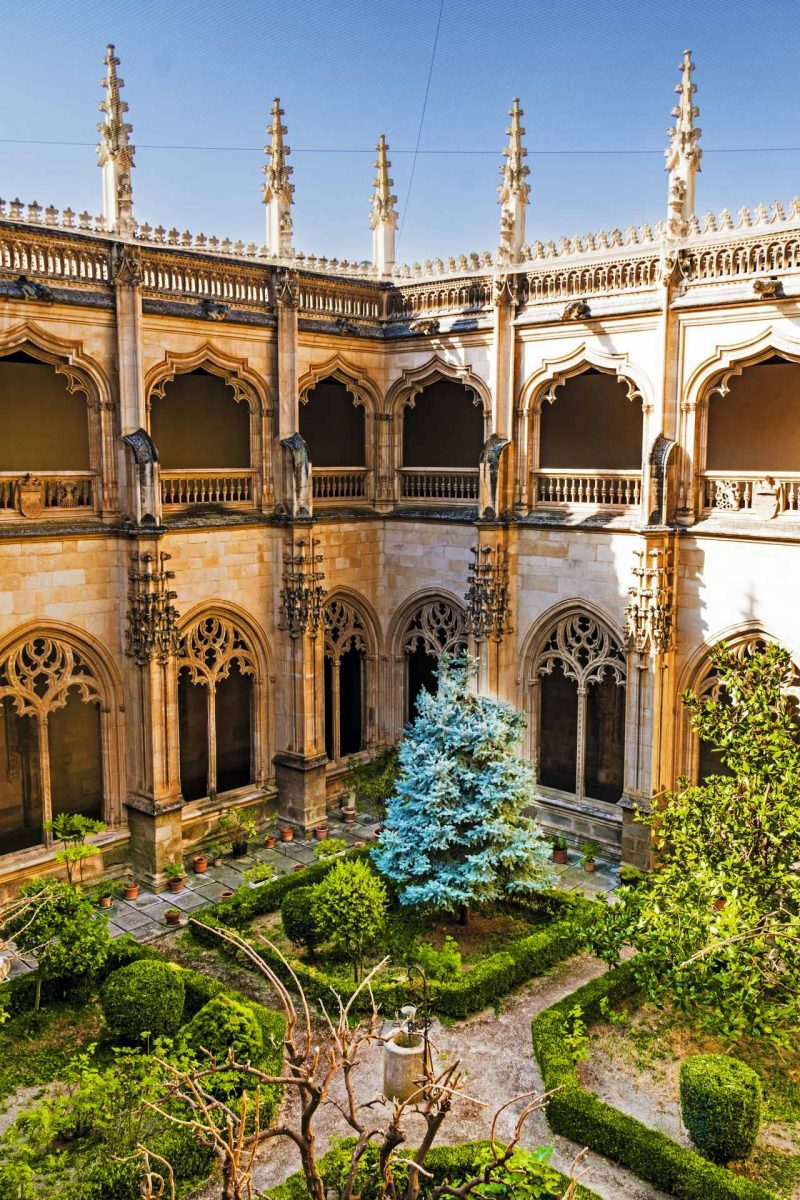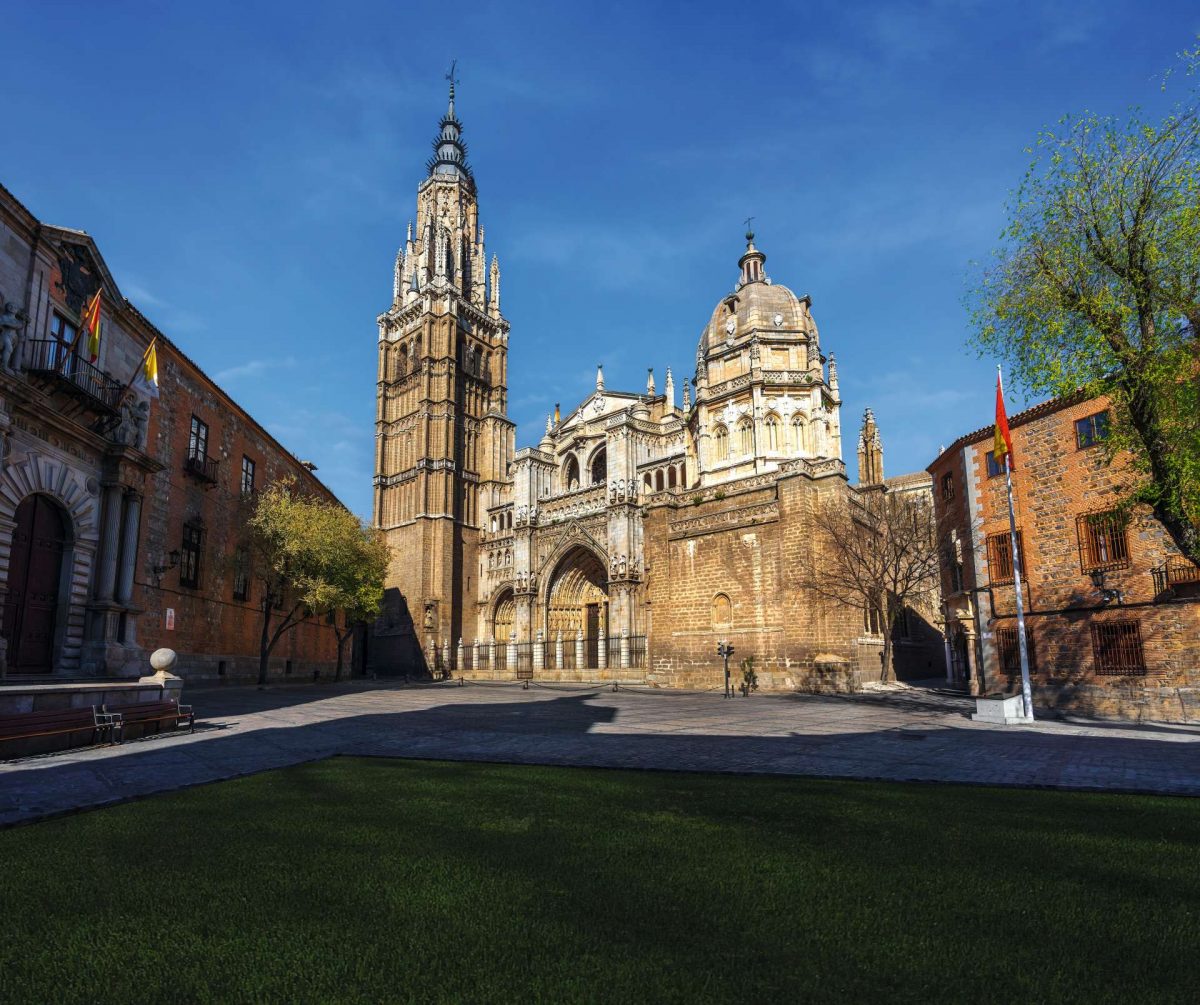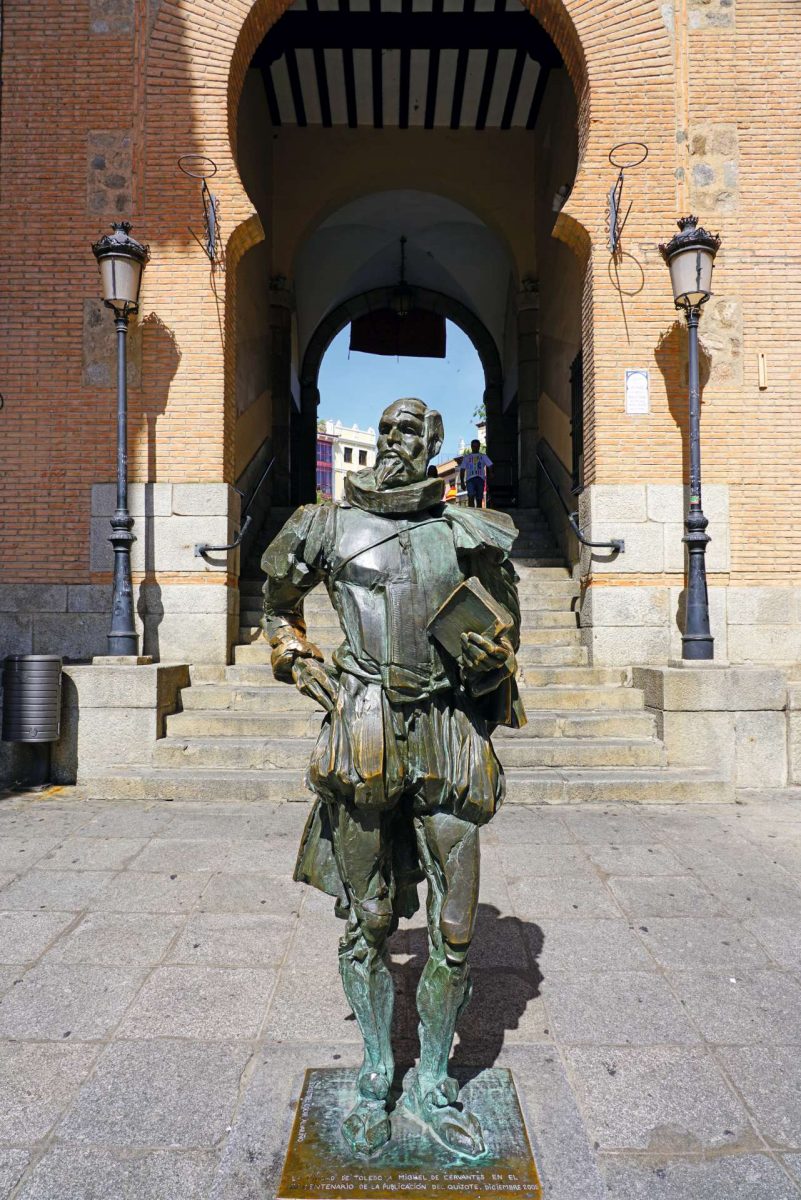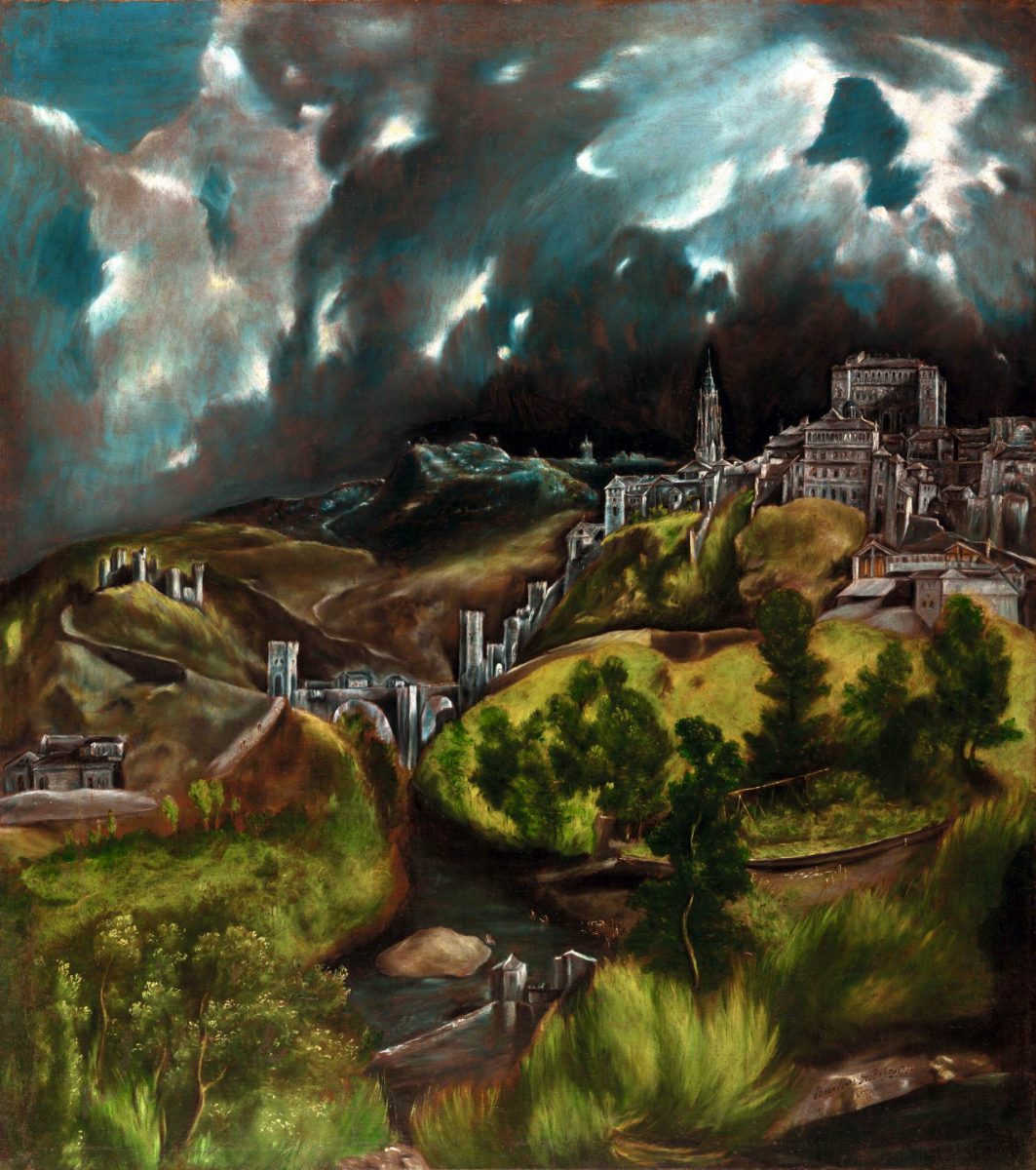Spain’s main cathedral is celebrating its 800th anniversary — a perfect reason to visit the capital of Castilla-La Mancha.

Buñuel, Dalí, Cervantes
Salvador Dalí, Federico García Lorca, and Luis Buñuel referred to themselves as the Knights of the Order of Toledo. It was Buñuel — the future great director — who invented this “order” during his wild student years. He would later feature Toledo in his films Viridiana and Tristana. There was nothing religious, of course, about the merry circle of young Spanish geniuses and their friends. Though they did induct new knights to the sound of Toledo Cathedral’s bells at one o’clock in the morning. But for travelers, the order’s first rule is perfect: one must visit Toledo as often as possible, wander its streets alone, and collect unforgettable impressions.

Another classic Spanish story also began on the streets of Toledo — that of Don Quixote of La Mancha. According to Cervantes’ plot, it was in the Alcana district near the Cathedral that the author purchased a manuscript in Arabic — a text that would become the immortal novel. Miguel de Cervantes visited Toledo many times and even owned a house there. Today, the monument to the writer is one of the most popular selfie spots in the city. Look for an encounter with the creator of Don Quixote on Cervantes Street, just off the main square, Plaza de Zocodover.
The city from El Greco’s paintings
Joining the Order of Toledo today is easy. At Madrid’s Atocha Station, board the high-speed AVE train, and in just 33 minutes you’ll arrive in Toledo, the capital of the autonomous community of Castilla-La Mancha. The best choice upon stepping off the train and catching sight of the medieval city perched on a hill is to head straight on foot — everything is close by — toward the suspension bridge over the Tagus River, the city walls, and the imposing gates.

It’s ideal if, on that day, the skies over Spain aren’t completely cloudless. When the skies over Castile are clouded, it feels as if you’ve stepped into the atmosphere of El Greco’s painting View of Toledo (housed in the Metropolitan Museum of Art in New York). Painted in 1599, the city is instantly recognizable at first glance. Thanks in part to the tower of the Cathedral.
The grand cathedral, El Greco’s paintings, Santa María la Blanca, the oldest synagogue in Europe, the labyrinth of medieval streets, and houses whose walls preserve stones from ancient Roman Toletum (as Toledo’s history dates back to the 4th century BC) — all form the essential sightseeing program that draws over a million visitors each year to this UNESCO World Heritage city.

Gothic masterpiece
In 2026, the number of visitors is expected to grow even higher. The Cathedral of Saint Mary, Spain’s principal Catholic cathedral and a monumental masterpiece of Spanish Gothic architecture, has already begun celebrating its 800th anniversary.
In 1226, the first stone was laid for the new five-nave cathedral, complete with a bell tower and magnificent stained-glass windows — the oldest of which, still preserved today, date back to the 14th century, though many were damaged during the Civil War of the 1930s. When Toledo was under Muslim rule, the site where the cathedral now stands was occupied by a mosque, and before that, it was home to a Christian church from the era of the Visigothic kings.

Construction was slow — it wasn’t completed until 1493, just a year after Columbus discovered America and the Catholic Monarchs, Ferdinand and Isabella, reclaimed Granada from the Moors, marking the beginning of a new era in Spanish history. Shortly thereafter, Toledo would become the capital of the flourishing Spanish Empire, though briefly, from 1519 to 1561.
And to this day, it remains the religious capital of Spain in many ways. To mark the cathedral’s 800th anniversary, even the new Pope Leo XIV is expected to visit — it is said that he holds special reverence for Saint Alonso de Orozco, the Augustinian monk from Castilla-La Mancha.

Anniversary innovations
The celebrations are already underway. One of the standout additions for the anniversary is Lumina — a 50-minute immersive sensory tour that takes visitors into the cathedral’s past through light, music, and 3D projections on its walls.
In May, the sacristy — home to fifteen El Greco paintings (including his masterpiece The Disrobing of Christ), as well as works by Goya and Van Dyck — opened a new exhibition titled Faces of Christ, featuring 150 interpretations by contemporary artists on this timeless theme.
Meanwhile, restorers uncovered a “new” treasure that’s nearly 500 years old. Frescoes by Juan de Borgoña, created in 1551, were discovered on the walls of the Chapter Hall.
The cathedral itself, the star of the anniversary, was meticulously scanned in detail — 1,700 scans and 68 million data points — resulting in a complete digital replica of the structure. A dedicated exhibition showcasing the digital replica has also been set up in one of the cathedral’s halls.
Another perspective
To see Toledo and its cathedral from a different perspective, head to the Mirador del Valle (a panoramic viewpoint) or to the Parador — one of Spain’s state-run hotels located in historic buildings or iconic locations. The mirador and parador are located just 10–15 minutes by car from the city center, perched on a high slope that offers sweeping views of the city framed by the winding curves of the Tagus River.
Spending the night at the parador is a beautiful idea. But hotels in the heart of Toledo have their own advantages as well. In the evenings, you can admire Gothic, Mudéjar, and Renaissance architecture beautifully illuminated by soft lighting. And you can play the part of a Knight of the Order of Toledo, listening to the cathedral bells ring out at one o’clock in the morning.
And yes, long walks after dinner are not only wonderfully romantic. Castilian cuisine, to put it mildly, is not the lightest. Take duelos y quebrantos, for example — a dish mentioned by Cervantes — it’s a hearty mix of spicy chorizo, pork fat, and eggs. Carcamusas is pork stewed with chorizo in a spicy sauce. Migas is a simple traditional dish made from breadcrumbs, which modern chefs are now reimagining in creative new ways. Solid arguments, in every sense, for joining the Order of Toledo!
Photo: shutterstock.com, Vostock Photo


